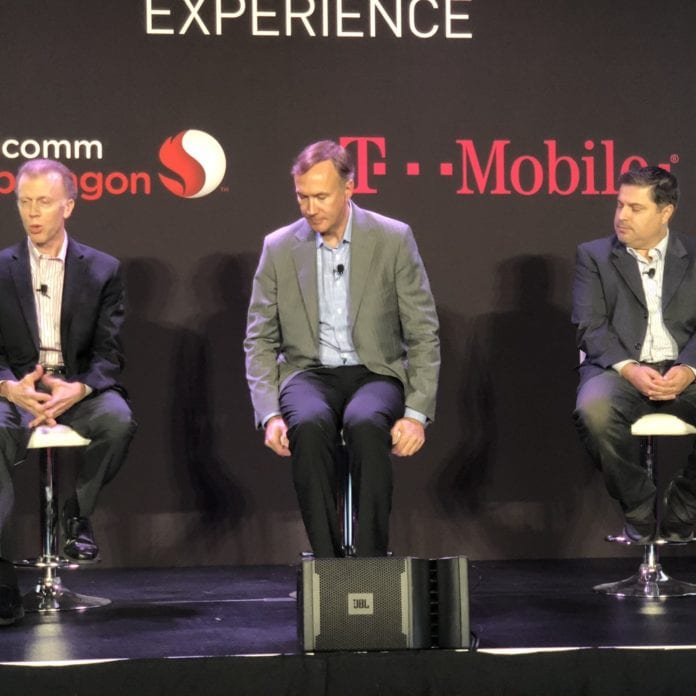License Assisted Access small cells in push to expand gigabit LTE
SAN JOSE, Calif.–Mark McDiarmid, T-Mobile US vice president of network engineering, explained yesterday that the operator plans to deploy 2,000 more small cells by the end of the year, which will add to its currently installed base of 3,000 small cells.
But that’s just a drop in the bucket compared to what’s coming next year. McDiarmid said the so-called “Un-carrier” has 25,000 small cell units contracted “most of which will be done next year,” he said during a joint T-Mobile US/Qualcomm-hosted event focused on gigabit LTE.
To the gigabit LTE piece, license assisted access (LAA), a technology developed by Qualcomm, allows carriers to create wider spectral channels by aggregating licensed and unlicensed spectrum. McDiarmid said LAA-compatible small cells will be turned up on the network in the first quarter of 2018.
“These small cells are maybe a few 100 yards to maybe a quarter-mile at most,” he said in a question and answer session with journalists and analysts. “But when you take 40 [megahertz] of licensed spectrum and 60 [megahertz of unlicensed spectrum” connected to dark fiber, “…the capability and the capacity that you put in that small cell is quite dramatic. That’s one of the ways we’re going to deliver gigabit. We’re continuing to build densification of macro sites in addition to small cells.”
Qualcomm Technologies Senior Director of Marketing Peter Carson, who also fielded questions in these session, highlighted the importance of LAA in the context of global expansion of gigabit LTE.
“Operators don’t have enough licensed spectrum to get to gigabit,” Carson said. But, with LAA, “literally 90% of all operators in the world can get to gigabit LTE with that LAA configuration. That is very different than the picture without LAA. This is the great equalizer that’s going to generate massive adoption worldwide of gigabit LTE. To get to gigabit, you have many fewer [radio frequency] combinations you need if you have 60 or 80 megahertz of unlicensed. I think with the carrier adoption worldwide, LAA is a key ingredient in that.”

